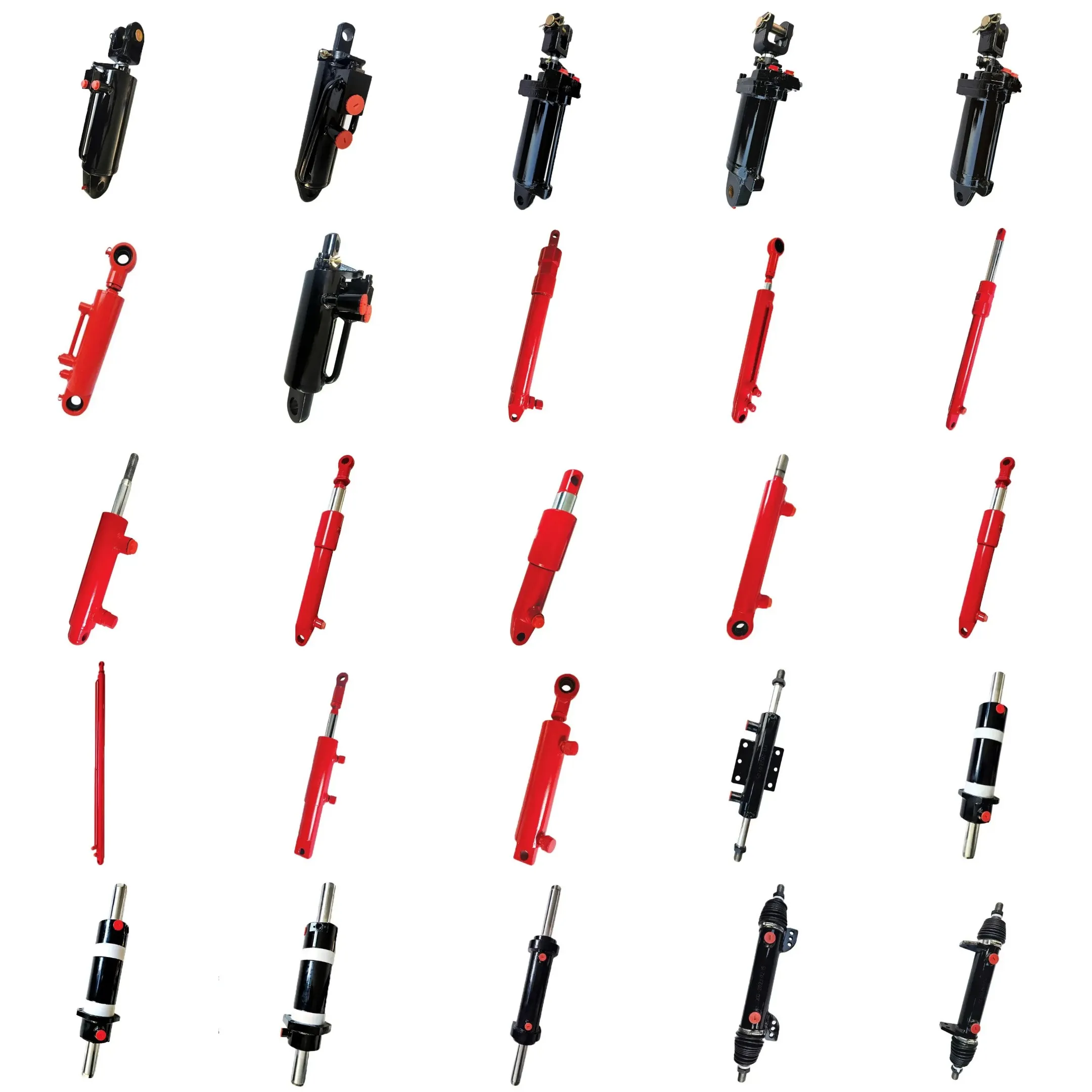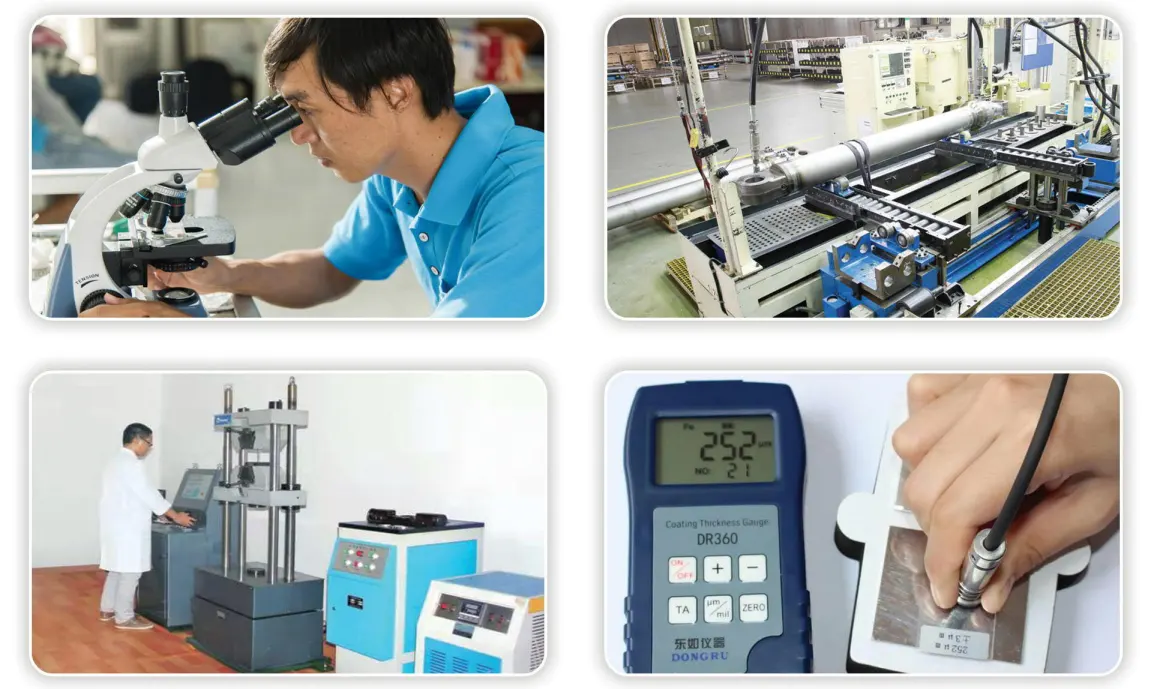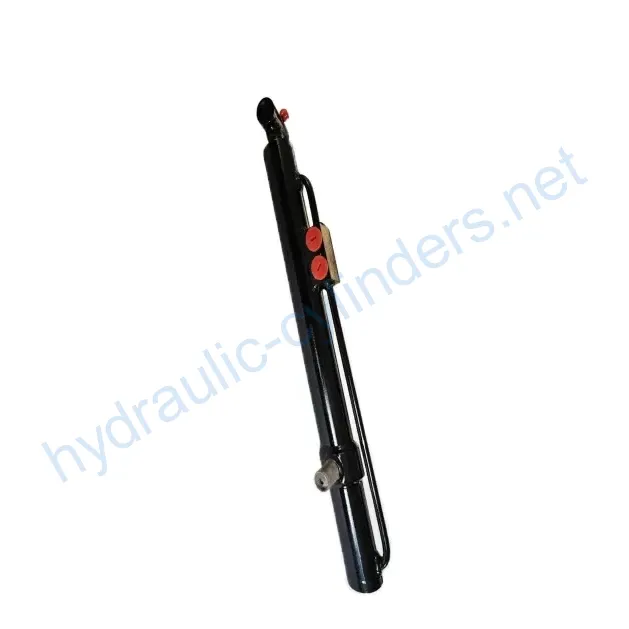ASTLDC500.10.7 Crawler Transport Vehicle Oil Cylinder
ASTLDC500.10.7 Crawler Transport Vehicle Oil Cylinder
Introduction to the Hydraulic Cylinder
The ASTLDC500.10.7 Crawler Transport Vehicle Oil Cylinder is an essential component designed for hydraulic systems in crawler transport vehicles. This hydraulic cylinder serves as a crucial actuator that converts hydraulic energy into linear mechanical motion. The primary function of this device is to facilitate the movement and operation of heavy machinery by providing the necessary force to lift, push, or pull loads. With a robust structure and reliable performance, this oil cylinder is engineered to meet the demanding requirements of various applications in construction, agriculture, and material handling. By using hydraulic fluid to create pressure, the cylinder generates force that enables efficient movement and operation, making it an indispensable part of modern machinery.
Product Specifications
- Cylinder Diameter: 40mm
- Rod Diameter: 25mm
- Travel: 385mm
- Installation Distance: 388mm
These specifications highlight the compact yet powerful design of the cylinder, making it suitable for a variety of applications. The cylinder diameter and rod diameter are crucial for determining the strength and load capacity, while the travel distance indicates the range of motion the cylinder can achieve. The installation distance is essential for ensuring proper fitting within machinery.
Features of the Product
- High durability and resistance to wear
- Efficient sealing mechanism to prevent leaks
- Lightweight design for easy installation
- Compatible with various hydraulic systems
- Customizable configurations available
We take pride in our ability to manufacture this hydraulic cylinder, which can perfectly replace existing models. Our products are designed to meet or exceed OEM specifications, ensuring seamless integration into your machinery.
Application Scenarios
Construction Equipment
The ASTLDC500.10.7 hydraulic cylinder is widely used in construction equipment such as excavators, loaders, and cranes. These machines require reliable hydraulic systems to perform tasks like lifting heavy materials, digging, and moving earth. The cylinder’s ability to generate significant force allows for efficient operation, reducing downtime and increasing productivity on construction sites.
Agricultural Machinery
In agriculture, this hydraulic cylinder is utilized in tractors, harvesters, and other farming equipment. It plays a vital role in lifting and lowering implements, adjusting the height of plows and other attachments. The robust design ensures that the cylinder can withstand the rigors of agricultural work, providing farmers with reliable performance in various conditions.
Material Handling
In material handling applications, the hydraulic cylinder is essential for forklifts and pallet jacks, enabling the lifting and transporting of heavy loads. The precision and strength of the cylinder enhance the efficiency and safety of operations in warehouses and distribution centers, contributing to smoother logistics processes.
Design Considerations and Selection Criteria
Load Capacity
The load capacity of the hydraulic cylinder is a critical factor in its design. It must be capable of handling the maximum expected load while ensuring safety and reliability. This is achieved through proper material selection and engineering that account for stress and strain during operation. Manufacturers must ensure that the cylinder can perform at its rated capacity without failure.
Sealing Capability
Sealing is another essential consideration in hydraulic cylinder design. Proper sealing prevents hydraulic fluid leaks, which can lead to reduced efficiency and environmental concerns. The use of high-quality seals made from durable materials like polyurethane and nitrile rubber is crucial for maintaining the integrity of the hydraulic system.
Durability and Longevity
Durability is vital for ensuring the long service life of a hydraulic cylinder. Factors such as corrosion resistance, wear resistance, and fatigue strength contribute to the overall longevity of the product. Rigorous testing and quality control measures are implemented to verify that the cylinder can withstand harsh operating conditions.
Safety
Safety features are paramount in hydraulic cylinder design. Manufacturers must incorporate safety valves and mechanisms that prevent over-pressurization and sudden failures. Ensuring that the cylinder adheres to industry safety standards is essential for protecting operators and equipment.
Maintenance and Repairability
Designing hydraulic cylinders with maintenance in mind enhances their usability. Easy access to components for inspection and replacement can significantly reduce downtime. A well-designed cylinder will allow for straightforward maintenance procedures, contributing to its overall reliability and efficiency.
Sealing and Lubrication
Effective sealing and lubrication are critical for the operation of hydraulic cylinders. Various sealing components, such as piston seals and rod seals, are used to prevent fluid leakage while maintaining optimal performance. The selection of seals made from durable materials like polyurethane and nitrile rubber ensures longevity and resistance to wear. Furthermore, the cylinder body and threaded ends must undergo precise machining to enhance wear resistance.
Regular lubrication with hydraulic oil is necessary to ensure smooth operation and prevent internal wear. Proper lubrication minimizes friction between moving parts, extending the lifespan of the cylinder. Operators should follow guidelines for oil types and application frequency to maintain optimal performance.
Regular Inspection and Preventive Maintenance
- Routine Inspections: Regular visual inspections help identify any signs of wear or damage. Operators should check for leaks, unusual noises, and performance issues.
- Lubrication Schedule: Establishing a lubrication schedule based on operating hours can help maintain hydraulic system efficiency. Proper lubrication intervals are essential to prevent early wear.
- 更换密封件: Periodic checks for seal integrity are crucial. Signs of deterioration or leaks indicate that it may be time to replace seals to maintain system performance.
Installation Guidelines
Proper installation of the ASTLDC500.10.7 hydraulic cylinder is critical for ensuring optimal performance. Begin by ensuring that all components are clean and free from debris. Align the cylinder accurately with the mounting brackets and use appropriate hardware to secure it in place. It is recommended to use suitable mounting supports to prevent misalignment during operation.
During installation, ensure that hydraulic lines are connected correctly and that there are no kinks or sharp bends that could impede fluid flow. Once in place, test the system under low pressure to check for leaks and ensure proper operation before full deployment. Adhering to these guidelines will enhance the longevity and effectiveness of the hydraulic system.
Common Maintenance Tasks
- Regular Inspections: Conduct thorough inspections to identify any potential issues early. This includes checking for fluid leaks, signs of wear, and proper alignment.
- Proper Lubrication: Ensure that the hydraulic cylinder is adequately lubricated according to the manufacturer’s recommendations. Using the right type of hydraulic oil and maintaining the appropriate levels is essential for smooth operation.
- Seal Replacement and Calibration: Regularly assess the condition of seals and replace them when necessary. Calibration checks ensure that the cylinder is functioning within its specified parameters, enhancing overall system performance.
Safety Considerations and Environmental Factors
When using hydraulic cylinders, safety measures must be a priority. Operators should be trained on proper handling and operation to prevent accidents. Regular safety audits of hydraulic systems help identify potential hazards. Moreover, environmentally-friendly practices should be adopted, such as proper disposal of hydraulic fluids and ensuring that systems are leak-free to minimize environmental impact.
Fault Diagnosis and Common Issues
- Fluid Leaks: One of the most common issues is fluid leakage, which can be caused by worn seals or damaged components. Regular inspections can help detect leaks early.
- Piston Sticking: Piston sticking can occur due to contamination or insufficient lubrication. It is essential to maintain clean hydraulic fluid and follow lubrication schedules.
- Pressure Loss: Loss of pressure may indicate leaks in the system or malfunctioning components. Thoroughly checking the hydraulic circuit is necessary to identify and resolve the issue.
Troubleshooting Tips
To effectively address issues, operators should follow systematic troubleshooting procedures. For fluid leaks, pinpoint the location of the leak and replace worn seals as needed. For piston sticking, ensure that the hydraulic fluid is free from contaminants and check for proper lubrication. If pressure loss is suspected, inspect hydraulic lines and connections for damage or wear. Implementing preventive measures, such as routine maintenance and inspections, can significantly reduce the likelihood of encountering these common issues.

About Our Company
We are a leading manufacturer of hydraulic cylinders, providing a comprehensive range of products that cater to both domestic and international markets. Our commitment to quality and innovation has established us as one of the top manufacturers and wholesalers in the hydraulic industry.
Our expertise is backed by international certifications, ensuring that our products meet stringent quality standards. We offer customized solutions tailored to meet the specific needs of our clients, utilizing advanced production equipment to guarantee precision and reliability. Additionally, our dedicated after-sales service ensures that customers receive ongoing support and maintenance, reinforcing our commitment to excellence.

Author: lyl
参观我们的 VR 工厂
通过以下方式参观我们的 VR 工厂
液压缸应用:


